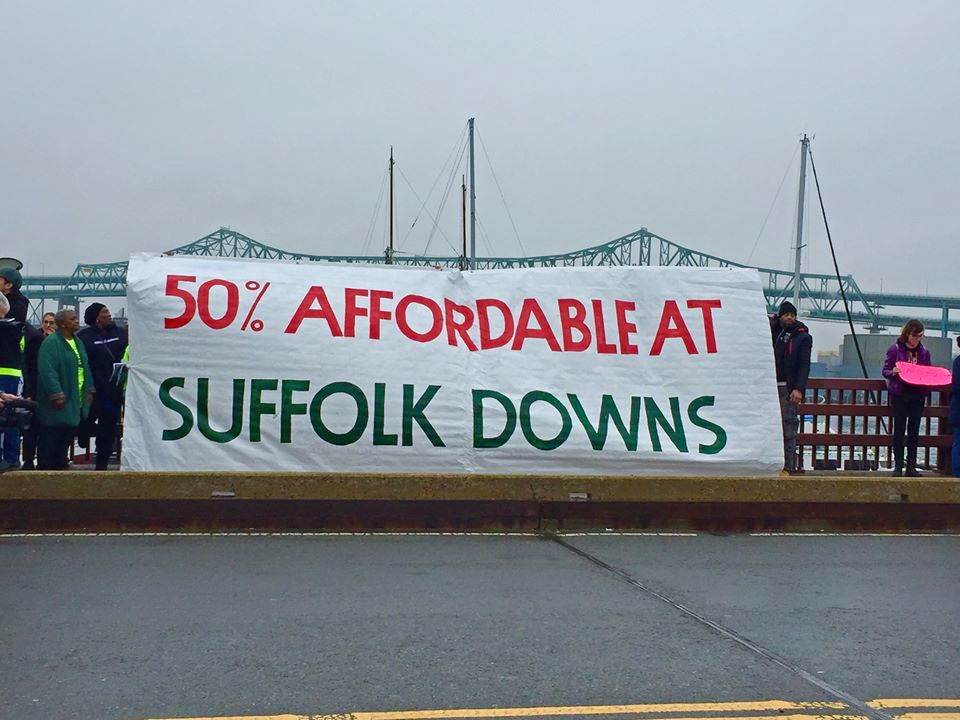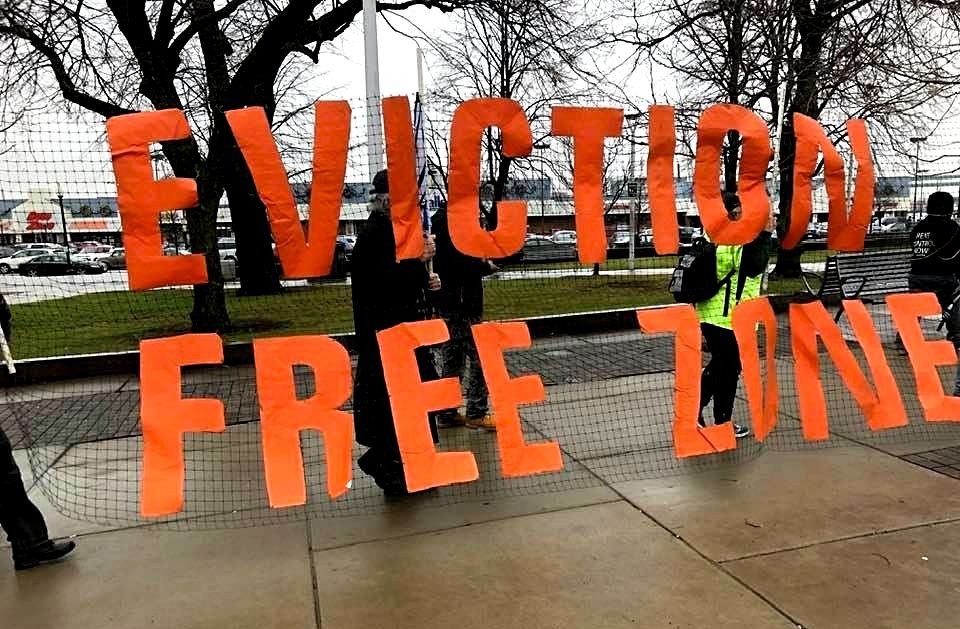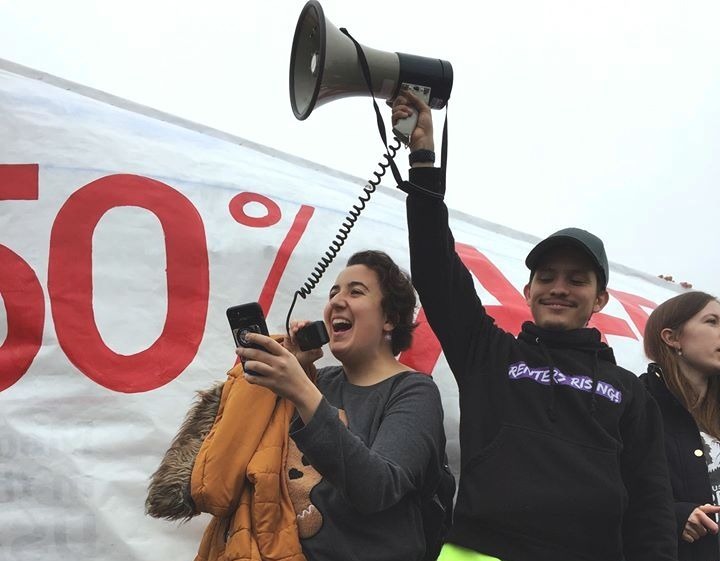by Miranda Catsambas, Climate Leadership Fellow
On a foggy December New England day, about one hundred people---black, brown, and white, both Spanish-and English-speaking---gathered in East Boston’s Central Square Park to rally and march in support of anti-displacement organizations’ ask that fifty percent of the houses in the new Suffolk Downs redevelopment project be affordable for folks earning 30% of the Area Median Income (AMI). Displacement is when "residents can no longer afford to remain in their homes due to rising housing bills (rents or property taxes)," according to The Uprooted Project, a joint initiative with The University of Texas School of Law and the Community and Regional Planning Program at UT Austin.
As folks arrived, they were greeted by organizers and members of organizations like City Life/Vida Urbana, Cosecha Massachusetts, and the Center for Cooperative Development and Solidarity, who were already at the park handing out information sheets that would later be given to passerby drivers throughout the march.
The new Suffolk Downs redevelopment project would include ten thousand housing units, which would be the largest single addition to Boston’s housing stock in history, says Tom O'Brien, a founding partner of The HYM Investment Group. After a rousing rally speech by City Life/Vida Urbana’s Andres Del Castillo, who reminded us both of the immediate effects of displacement and gentrification on East Boston, and of similar consequences when raising rents on neighboring areas like Dorchchester and Roxbury, folks marched to the Andrew McArdle Bridge, slowed down traffic, and displayed a banner that read: “50% AFFORDABLE AT SUFFOLK DOWNS.”
Throughout the march, some protesters held up a large fence that read: “EVICTION FREE ZONE.”
And at the event, Sierra Club had the privilege of speaking up against anti-displacement, and why affordable housing intersects with our goals to fight climate change. In this document you can see what Sierra Club said at the rally.
In a letter written by Lawyers for Civil Rights, the coalition clearly lays out the problem: “A project of this magnitude, in a lower-income, historically immigrant community suffering from rising rents, must incorporate a far fuller set of benefits for the communities of color harmed and displaced by the proposed redevelopment.”
Developers adhere to the basic economic principle that building more houses lowers the price for everyone. In reality, what happens is something like the result of the redevelopment of the Seaport District in Boston; a WBUR article on racial segregation prevalent in Boston's housing plans says that the Seaport District became a “largely white, largely affluent” neighborhood. Eventually, rents also go up in surrounding areas, too.
How is this related to Sierra Club’s goals and campaigns? Because being able to live near where you work, go to school or church means less driving. When families are displaced from their long-standing community due to rising costs of living, those folks will be driving more. As a result, they will contribute to the rising emissions of greenhouse gases in order to remain a part of their base community. Regarding climate resiliency, when folks can stay with their long-time neighbors, churches, and communities, they can more easily weather destructive impacts of our climate crisis---and low-income communities, which are the ones getting displaced, also frequently carry the biggest burdens of increasing greenhouse gas emissions.
On a related note, seeing as emissions are only getting greater, it is now more important than ever to build new developments with a net zero structure. A letter that will be addressed to Councilor Lydia Edwards, signed by housing, environmental, transit, and community organizations, and sent next week states that “the proposed Suffolk Downs project must achieve net zero carbon from day one for all buildings. In a time of increasingly severe and disparate impacts from climate change, a project that is not net zero carbon cannot support a finding of net public benefit.”
The point here? The benefits of net zero buildings extend beyond combating the climate crisis. They can also be part of an affordable housing solution. Areas like Dorchester and East Boston pay more per-household for energy cost. Even though households in these communities have smaller houses, they’re paying more for energy than other families. Our allies at the Massachusetts Climate Action Network (MCAN) hosted a two-part webinar, "Affordable Housing as a Climate Solution," which explains in greater detail why the follow statement, made by Groundswell CEO Michelle Moore, is true: “People who earn less aren’t just paying more for electricity as a percentage of their income; they're paying more because it actually costs more per square foot.” Groundswell is a nonprofit renewable-energy advocacy group. To learn more about their findings, read this article in The Atlantic called “Why Poor Americans Have Some of the Highest Electricity Bills.”
We need to continue advocating for the intersections of our issues. Environmental, social, and economic justice are interrelated. Poor people’s homes will be (and have been) destroyed first under our climate crisis. People whose homes leak energy from older and less sustainable structures pay more for energy than those who live in air-tight buildings. Often times, these are people of color and people who are most at risk of eviction or of becoming homeless, like queer people who are kicked out of their homes. Fighting for environmental justice needs to include recognition of social realities---yes, because of the social responsibility to our neighboring communities, and because our fight against destructive climate impacts becomes more real, clear, and effective.